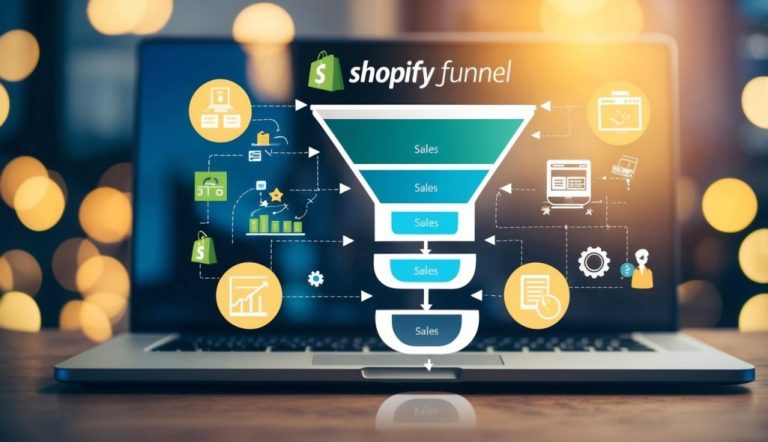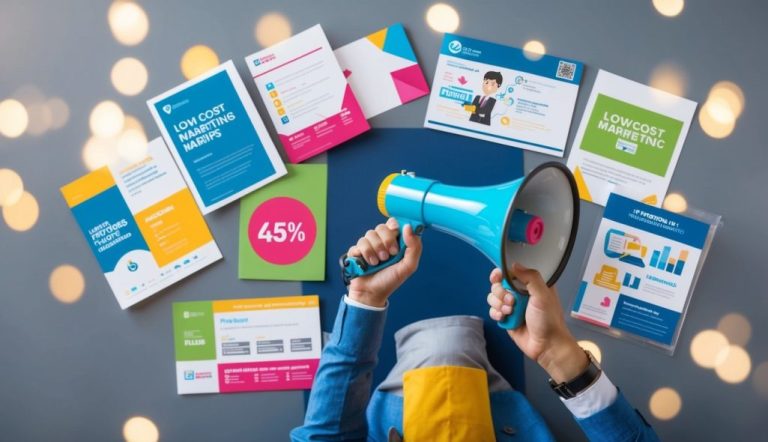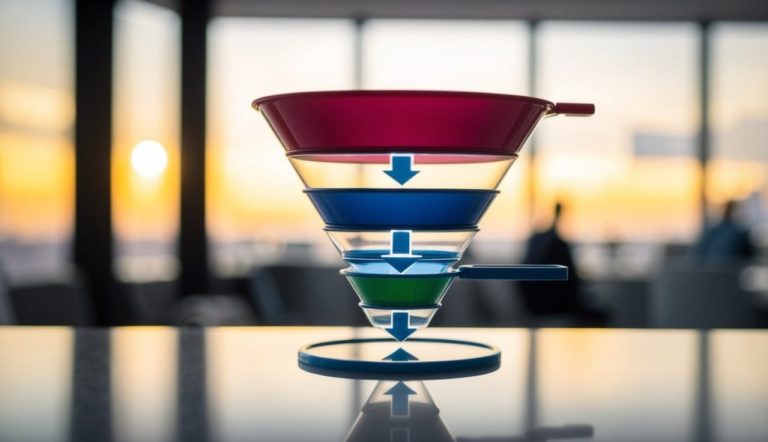Creating an effective appointment funnel can transform how your business connects with potential clients. An appointment funnel streamlines the journey from initial contact to confirmed booking, making it smoother and more efficient for both you and your leads. By focusing on a clear sequence of steps, you remove barriers that might prevent a potential client from scheduling a meeting.

Think of an appointment funnel as a way to increase your business growth and conversion rate. It begins with engaging landing pages and continues through successful strategies like email marketing and social media campaigns. This method not only attracts qualified leads but also builds personal connections that can enhance client relationships.
To fully leverage the power of an appointment funnel, you should also embrace automation tools. These tools allow you to analyze performance and adjust your strategies for maximum effectiveness. With all these elements working together, you’re setting the stage for measurable growth and more reliable appointment setting.
Key Takeaways
- Appointment funnels make booking meetings easier and more efficient.
- Engaging content and automation increase conversion rates and client retention.
- Analyzing results helps optimize your appointment funnel for business growth.
Understanding the Appointment Funnel
An appointment funnel guides potential clients from initial interest to booking an appointment. This process can significantly elevate your business by attracting high-quality leads and enhancing conversion rates.
Concept and Importance
The appointment funnel is an essential tool for businesses, particularly service-based ones. It works similarly to a sales funnel, guiding potential clients through steps until they book an appointment.
Using an automated appointment funnel can save time. It handles initial client interactions, letting you focus more on service than scheduling. This funnel is a key element in generating high-quality leads, which are crucial for sustained business growth.
Stages of the Appointment Funnel
The appointment funnel typically consists of a few stages: awareness, interest, decision, and action.
- Awareness: Prospective clients learn about your services.
- Interest: Engaging content catches their interest.
- Decision: Clients consider booking.
- Action: Final step where they book an appointment.
Each stage must be finely tuned to ensure maximum efficiency. Understanding these stages helps in restructuring your approach to target audiences effectively, eventually boosting conversion rates.
Optimizing for Conversion Rates
To maximize conversion rates, analyze and adjust your funnel regularly. Consider tools like CRM software to streamline and automate appointment setting.
Use engaging emails and personalized follow-ups to nurture leads and prompt action. An optimized appointment funnel increases efficiency, capturing more high-quality leads and improving the likelihood of converting them into confirmed bookings.
Creating Compelling Landing Pages
Creating compelling landing pages is crucial for guiding visitors towards scheduling appointments. These pages should be optimized to enhance user experience and conversion rates, employing strategies like A/B testing and seamless integration with scheduling tools.
Key Elements of Effective Landing Pages
To make a landing page effective, first focus on a clear headline that captures attention. This sets the tone and makes visitors want to learn more.
Include strong visuals that are relevant and engaging, along with a succinct and informative text to keep users interested.
Incorporate a prominent call-to-action (CTA) that tells visitors what to do next, such as “Book Now” or “Schedule an Appointment.” The CTA should stand out, with a contrasting color and bold font.
Ensure that the page loads quickly. Slow loading times can deter potential clients from continuing their journey toward booking an appointment. A clean design, without too many distractions, helps maintain focus on the main message.
A/B Testing for Landing Page Optimization
A/B testing is an effective way to determine what works best on your landing page. It involves creating two versions of a page to test different elements like headlines, images, or CTAs. Track which version gets more engagement or leads to more appointments.
Review data regularly to understand user interactions. For instance, if one version with a particular CTA placement results in more bookings, you gain insights into user preferences. Continually refine your pages based on these findings to keep them efficient.
This process allows for targeted improvements. Through ongoing testing, you can determine the best design and content strategies to increase conversion rates.
Integrating with Appointment Scheduling
Integrating your landing page with appointment scheduling tools is essential. This integration allows visitors to book appointments directly without navigating away from the page. Use scheduling software that can easily embed into your landing pages.
Ensure the integration is smooth and user-friendly. The interface should be intuitive, guiding users seamlessly from interest to action. This reduces friction and increases the likelihood of visitors completing the booking process.
Automate confirmations and reminders through the scheduling system. This ensures that both you and the client are on the same page, reducing no-shows and enhancing the overall experience.
Lead Generation Strategies
When building effective lead generation strategies, it is vital to identify who your target audience is, create compelling gated content offers, and use networking events to gather leads. Each of these steps plays a crucial role in strengthening your lead generation efforts.
Identifying the Target Audience
Knowing your target audience is the first step in any successful lead generation strategy. Start by defining your ideal customer profile, which includes demographic information, interests, and buying behavior. Tools like surveys and social media analytics can help gather this data.
Once you have this information, tailor your marketing content to speak directly to these prospects. Engaging the right audience leads to higher conversion rates and more meaningful interactions. Without targeting the right group, your efforts may result in wasted resources.
Developing Gated Content Offers
Gated content is a powerful way to generate leads by offering valuable resources in exchange for contact information. This might include e-books, whitepapers, or exclusive webinars. To increase effectiveness, ensure that your content addresses specific pain points or interests of your audience.
Using a clear and enticing call-to-action encourages visitors to fill out forms and share their information. Providing valuable insights not only attracts new leads but also establishes trust and authority in your field. This approach ensures that leads are genuinely interested and more likely to convert.
Utilizing Networking Events for Leads
Networking events offer excellent opportunities to connect with potential leads in person. These might include industry conferences, trade shows, or local business gatherings. Attending such events helps you meet prospects face-to-face and build relationships that can lead to sales.
Prepare by researching attendees and devising ways to engage them. Bring marketing materials and consider offering promotional items to attract interest. After events, it’s crucial to follow up promptly. Networking events provide both immediate and long-term lead generation benefits, making them a valuable addition to your overall strategy.
Leveraging Email Marketing Tactics
Utilizing email marketing tactics is crucial for optimizing your appointment funnel. Crafting targeted email campaigns, using automated systems to nurture leads, and designing effective follow-up emails can enhance engagement and conversions.
Crafting Effective Email Campaigns
When creating email campaigns, it’s important to focus on your target audience. Begin with a compelling subject line to increase open rates.
Personalize your content by using segmentation based on user behavior and preferences. List benefits clearly and include a strong call to action.
Visuals like images or infographics can make your message more engaging. Ensure that your emails are mobile-friendly, as many users access emails on their phones.
Regularly test different elements such as subject lines and email formats to find what works best for your audience.
Using Automated Emails to Nurture Leads
Automated emails are key to keeping leads engaged without continuous manual effort.
Set up welcome sequences that introduce new subscribers to your brand. Provide value by sharing helpful resources or educational content.
Drip campaigns help maintain interest by gradually sending out information over time. These can include product information, testimonials, or case studies.
Use behavioral triggers to send personalized messages based on how leads interact with your emails or website. Automation tools save time and ensure timely follow-ups with interested prospects.
Designing Follow-Up Emails for Engagement
Follow-up emails ensure that your initial contact doesn’t go unnoticed. Send a thank-you email after a meeting or call to show appreciation and keep the conversation alive.
Keep follow-ups concise yet informative, summarizing key points or offering additional information.
Include personalized recommendations or special offers to encourage further interaction. Consistency in follow-ups helps build trust and keeps your brand in mind.
Use advanced strategies to tailor these emails to the recipient’s needs and behaviors.
Utilizing A/B testing can improve the effectiveness of your follow-ups by finding the best messaging and timing.
Automation in Appointment Setting
Harnessing automation in appointment setting streamlines processes, reduces errors, and minimizes no-shows. You can enjoy seamless scheduling, manage appointments with ease, and improve customer satisfaction with these strategies.
Benefits of Email Reminders and Scheduling Tools
Sending reminders through automated emails is vital for keeping appointments on track. When you set up email reminders, clients receive notifications about upcoming bookings, which helps reduce forgotten appointments. By consistently reminding clients, you’ll see fewer no-shows.
Scheduling tools like Go High Level can integrate with your calendar, ensuring you don’t double-book. These tools synchronize all your activities, making it easy to spot and fill open slots. Clients appreciate the ability to see available times and select what fits their schedule.
Automating the Booking Process
Automating the booking process saves time by allowing clients to easily book their appointments online. When you implement a system that offers self-service booking, users can choose their preferred times without needing to call you.
Automation also ensures that each client is guided step-by-step through the booking process. With tools that automatically confirm bookings, there’s little room for human error. This approach helps maintain a smooth and efficient schedule. It enables you to focus on more important tasks rather than managing availability manually.
Managing Cancellations and Reschedules
Automated systems make it easier to handle cancellations and reschedules efficiently. When clients need to change their appointments, they can do this themselves through the booking system you’ve put in place. This allows for quick and hassle-free updates to your schedule.
By having automation in place, you’ll receive notifications as soon as someone cancels or changes their booking. This feature allows you to react promptly and seize the opportunity to fill the newly opened slot. It minimizes disruptions and ensures that your schedule remains as full as possible.
Engaging Through Social Media and Paid Ads
Using social media and paid advertising can help boost the visibility of your appointment booking pages and improve conversions. Maximizing these platforms means understanding how to integrate your promotional strategies effectively.
Promoting Booking Pages on Social Networks
Promoting your booking pages on social media keeps your audience engaged and informed. Share regular updates and posts with direct links to your booking page. Use eye-catching images or short videos to capture attention. Platforms like Instagram and Twitter are ideal for reaching your audience quickly.
Encourage interaction by posing questions or encouraging followers to comment. Engaging content can increase shares and visibility, driving more traffic to your booking system. Using platforms’ analytics tools helps you understand user engagement, tailoring future posts for better reach.
Creating Effective Facebook Ads Campaigns
Facebook Ads offer targeted opportunities to promote appointment booking. Start by defining your target audience based on age, location, or interests.
Craft clear and compelling ad copy that highlights the benefits of booking with you.
Utilize Facebook’s dynamic creative feature to test different images and text to find what resonates best with your audience. It helps in optimizing your campaign’s performance.
Use a strong call-to-action that directs users straight to your booking page, simplifying the path to conversion.
Tracking Conversion from Paid Ads
Understanding the effectiveness of your paid ads requires tracking their conversion rates. You can set up conversion tracking using tools like Google Analytics or Facebook Pixel. These tools help you see which ads are driving successful bookings.
Monitor key metrics such as click-through rates and cost per conversion to evaluate how well your ads are performing. Then, adjust your strategy based on these insights to improve future campaigns. Regularly reviewing and analyzing data ensures that you’re making informed decisions about where to allocate your budget for the best results.
Enhancing Client Relationships and Retention
Building strong client relationships is essential for ensuring repeat bookings and long-term success. To achieve this, you can employ tactics like using content marketing to nurture these relationships, actively valuing client feedback, and following up with clients after appointments.
Nurturing Relationships with Content Marketing
Using content marketing can help you nurture relationships with your clients. Regularly sharing valuable content such as articles, newsletters, or videos keeps your clients engaged and informed.
By providing information that addresses your clients’ needs or interests, you show that you understand and care about what matters to them.
Ensure that the content you share is relevant and reflects the values of your business. Personalizing content can further strengthen ties by making clients feel seen and appreciated.
You can use various platforms to deliver this content, like email newsletters, blogs, or social media. This can broaden your reach and interaction.
Valuing Client Feedback
Listening to your clients’ feedback is a powerful tool for building relationships. Encourage your clients to share their thoughts on your services through surveys or direct communication.
Their input helps you improve and lets them know that their opinions matter.
Create easy channels for feedback, like online surveys or feedback forms, to make it simple for clients to express their views. Addressing concerns and implementing suggested improvements shows clients their feedback is valued, fostering trust and loyalty.
This active engagement helps in identifying your ideal clients and tailoring your services to better suit their needs.
Following Up Post-Appointment
Following up with clients after appointments is crucial for retention. A simple thank-you message or asking for feedback can make clients feel appreciated. This follow-up also opens avenues for addressing any lingering questions or concerns they might have.
Use this opportunity to offer additional resources or suggest future appointments if relevant. Personalize these communications to cater to each client’s specific experience with your service.
Consistent and thoughtful follow-ups demonstrate that you are invested in maintaining a long-term relationship and not just a one-time interaction, which reinforces trust and encourages loyalty.
Analyzing Performance and Growth Opportunities
Understanding how your appointment funnel performs is crucial. This involves tracking lead conversion and optimizing data-driven strategies. Exploring new marketing channels and traffic sources can further enhance growth. Each of these areas plays a significant role in improving your overall sales pipeline.
Tracking Lead Conversion Effectiveness
It is important to assess how effectively leads are converting into appointments. Conversion rate can be a key metric to focus on. By consistently measuring this rate, you can spot trends in lead behavior.
Setting up KPIs that align with your sales goals allows for clearer insights. Consider using tools like Google Calendar to effectively manage booked appointments. You can also review call data to see which tactics bring in more qualified leads.
Keep an eye on how different strategies impact your conversion figures and adjust as necessary.
Using Data to Enhance the Funnel
Data analysis is essential for optimizing each step of your funnel. Start by collecting detailed data about your current funnel. This involves understanding where most drop-offs occur and which stages convert best.
Utilize A/B testing to see which changes resonate with your target audience.
Analyzing performance metrics can help you better allocate resources and focus on initiatives that yield the greatest impact. This data-driven approach aids in effectively prioritizing work and boosting conversion rates.
Leveraging new software tools can automate some of this analysis, making it more efficient and accurate.
Exploring New Marketing Channels and Traffic Sources
Discovering new marketing channels can expand your reach. Consider untapped platforms such as social media or digital spaces that align with your audience.
It’s beneficial to track and experiment with different traffic sources. Look at how traffic from each source behaves in your funnel. This can reveal which leads are more likely to convert into appointments.
Testing these new avenues will provide insights and might improve your sales pipeline. Don’t hesitate to adjust your strategies based on what the data tells you about these new channels.
Frequently Asked Questions
An appointment funnel helps service-based businesses attract and engage clients by using a structured process. Automation plays a crucial role in enhancing efficiency, while design strategies and key components can greatly improve conversion rates.
What are the key components of an effective appointment funnel?
An effective appointment funnel includes traffic generation, lead capture, and nurturing elements. It’s essential to understand the target audience and create engaging content. Key components also involve follow-ups and confirmations to secure appointments.
How can an appointment funnel improve conversions for service-based businesses?
By streamlining the customer journey, an appointment funnel can increase conversions for service-based businesses. Using a tailored approach to guide potential clients helps in addressing specific needs and building trust, fostering higher engagement rates.
What is the role of automation in streamlining the appointment scheduling process?
Automation simplifies the appointment scheduling process by reducing manual tasks. It ensures timely reminders, follow-up emails, and confirmations, saving time and minimizing the risk of human error. This efficiency can boost client satisfaction and retention.
Can you describe how a sales funnel differs from an appointment funnel?
A sales funnel focuses on moving prospects through stages leading to a purchase. An appointment funnel, however, is specifically designed to guide potential clients to schedule appointments. The two share similarities in structure but differ in their end goals.
What are some best practices for designing an appointment funnel page?
When designing an appointment funnel page, use clear calls-to-action and easy navigation. Ensuring a mobile-friendly design is crucial. Incorporate engaging visuals and concise text that resonates with your audience. Test and optimize regularly based on user behavior.
How do the stages of a traditional sales funnel apply to an appointment funnel?
In an appointment funnel, stages like awareness, consideration, and decision are adapted to guide prospects to book appointments.
Attract prospects with relevant content. Then, nurture them with personalized communication and finalize with scheduling options that make booking easy.





